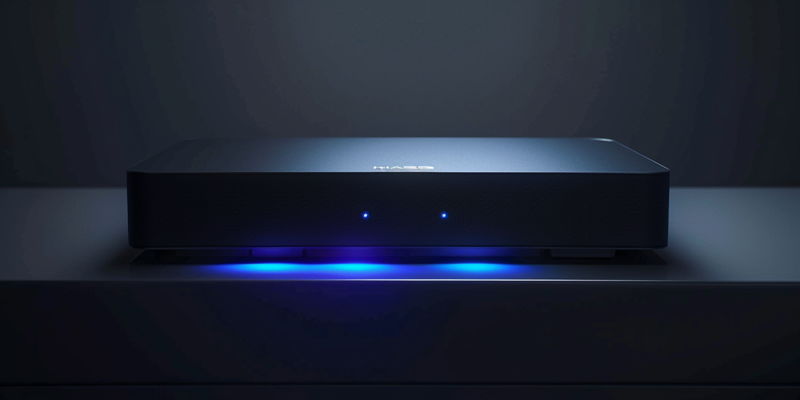In the world of network technology, D-Link stands as a prominent figure, providing a plethora of devices that enable seamless connectivity. However, recent revelations have cast a shadow over this reputation. A significant security flaw has been disclosed, specifically affecting D-Link’s end-of-life products, exposing a multitude of devices to potential cyber threats.
This newly discovered vulnerability has sent ripples of concern across D-Link’s user community, considering the vast number of individuals who could be implicated. The security gap suggests that tens of thousands of users may be at risk, as their devices, no longer supported with regular updates and patches, could be easy prey for cybercriminals.
The gravity of the situation is not lost on consumers and cybersecurity experts, who recognize the potential for compromised personal and professional data. As the industry grapples with the implications of this security lapse, D-Link faces the challenge of addressing the concerns of its vast user base, many of whom rely on the integrity and security of their network devices. The situation serves as a stark reminder of the enduring need for vigilant cybersecurity measures, especially for devices that have reached the end of their lifecycle yet remain in widespread use.
The Critical Vulnerability
Discovering CVE-2024-3273
A serious security vulnerability, identified as CVE-2024-3273 with a CVSS rating of 7.3, has placed over 90,000 devices in jeopardy. This flaw, located within the “nas_sharing.cgi” URI, is particularly alarming due to hardcoded credentials that act as a backdoor, coupled with a command injection issue through the ‘system’ parameter. This dangerous mix allows attackers to carry out unauthorized commands, exposing devices to data theft, unauthorized manipulation, and denial of service attacks.
The ShadowServer Foundation’s confirmation of active exploit attempts by various IP addresses amplifies the urgency of this issue. Network-attached storage (NAS) devices, previously considered secure storage solutions, are now vulnerable to cybercriminals who prey on the typically weaker security measures of private users. This newfound susceptibility highlights the need for heightened security vigilance among NAS users to prevent potential cyber incursions and safeguard their data from illicit access and control.
Affected Models and User Advisory
D-Link has announced the discontinuation of support for several of its older network-attached storage (NAS) models, including the DNS-340L, DNS-320L, DNS-327L, and DNS-325. With these devices reaching end-of-life, they won’t be getting any further firmware updates or manufacturer support. Users of these legacy units face a difficult decision: continue to use potentially insecure equipment or invest in updated, secure storage options.
D-Link has strongly advised customers to retire the outdated devices. For those who might still need to use these models, the company suggests taking precautionary measures. This includes changing passwords regularly, using strong Wi-Fi encryption, and ensuring they run on the last available firmware version. However, the recommended best practice is to avoid using these units altogether. If there is no option but to keep them operational, it’s crucial to limit remote access by implementing strict firewall protocols. In essence, D-Link is stressing the importance of prioritizing security and encourages users to transition to newer, supported hardware to safeguard their data.
Responding to Cybersecurity Challenges
A Growing Concern for NAS Devices
Network-attached storage (NAS) devices are increasingly popular among individuals and small businesses who use them for convenient data storage. However, their growing use has made them targets for cybercriminals. NAS units often don’t receive the level of security attention that more complex IT systems do. This can be a costly oversight, as NAS vulnerabilities offer cybercriminals access to potentially sensitive information.
The risk is particularly acute for users without the technical know-how to secure their devices properly. Many fail to routinely update their software or configure advanced security settings. Such lapses in security can have serious consequences, making NAS units easy targets for attackers.
The situation is made worse by the widespread availability of information about these vulnerabilities online. With exploit details at their fingertips, even attackers with moderate skills can take advantage of unguarded NAS devices.
Overall, as the reliance on NAS systems grows, it’s crucial for users to become more vigilant. By taking proactive steps like applying regular updates and setting up robust security measures, NAS owners can protect their valuable data against unauthorized access.
Call for Increased Security Practices
D-Link’s urging for customers to replace vulnerable devices goes hand in hand with a broader call to action within the tech community for heightened vigilance and proactive security management. It’s clear that the era of “set-and-forget” device setup is a dangerous relic of the past. In light of these ongoing threats, NAS users, in particular, should take the initiative to educate themselves on cybersecurity best practices. This education includes performing regular check-ups on devices, staying abreast of vulnerability announcements, and ensuring that outdated systems are either updated or taken offline. As the digital landscape evolves, so too does the narrative that closed systems are impenetrable. The D-Link case serves as a stark reminder that regular maintenance and security precautions are indispensable in securing our connected world.

